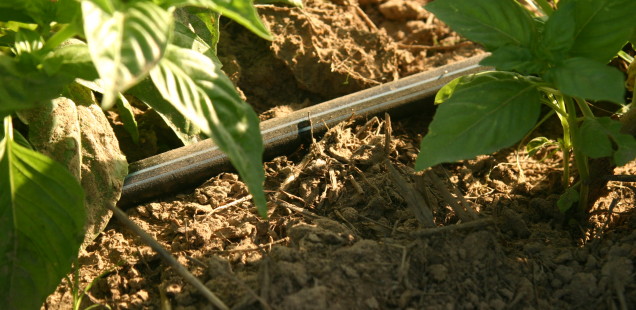
Summer Irrigation
To keep producing fresh crops year round in Texas, it’s pretty risky to rely solely on rain water. With the inconsistent rain patterns in the South, choosing to forgo irrigation would mean our growing season would be coming to a close this time of year and we would wait for next Spring to begin more planting. Both our selection of crops and the length of the growing season would be much shorter. With a low cost and low-tech method of irrigation, Red Moon Farm can supply fresh vegetables nearly the entire year.
There are a wide variety of methods farmers use to irrigate their crops: flood, furrow, or trench irrigation, where a very large volume of water runs near the sides of the planted rows; overhead irrigation, which can be a variety of sprinkler systems, perforated pipes, or rotating pivots, all of which lose a good deal of the water to evaporation; and micro-irrigation, which uses very small sprinklers or drip emitters to place a small amount of water only where it is needed, near the base of the plant. In an aim to do what is the most sustainable for our small farm’s ecosystem, we use a micro-irrigation method at Red Moon Farm. Check out how we minimize water usage, reduce evaporation, and keep our expenses as low as possible in our irrigation methods.
We lay one or more “drip lines” down the length of each bed.
The drip lines come on a large roll, and we suspend it in the bed of the truck for ease of pulling it out across the 250 foot long growing beds.
We reconnect the line at any holes or breaks in the line and keep it pulled taught.
When we’re finished, there is a drip line laid near the base of each planting.
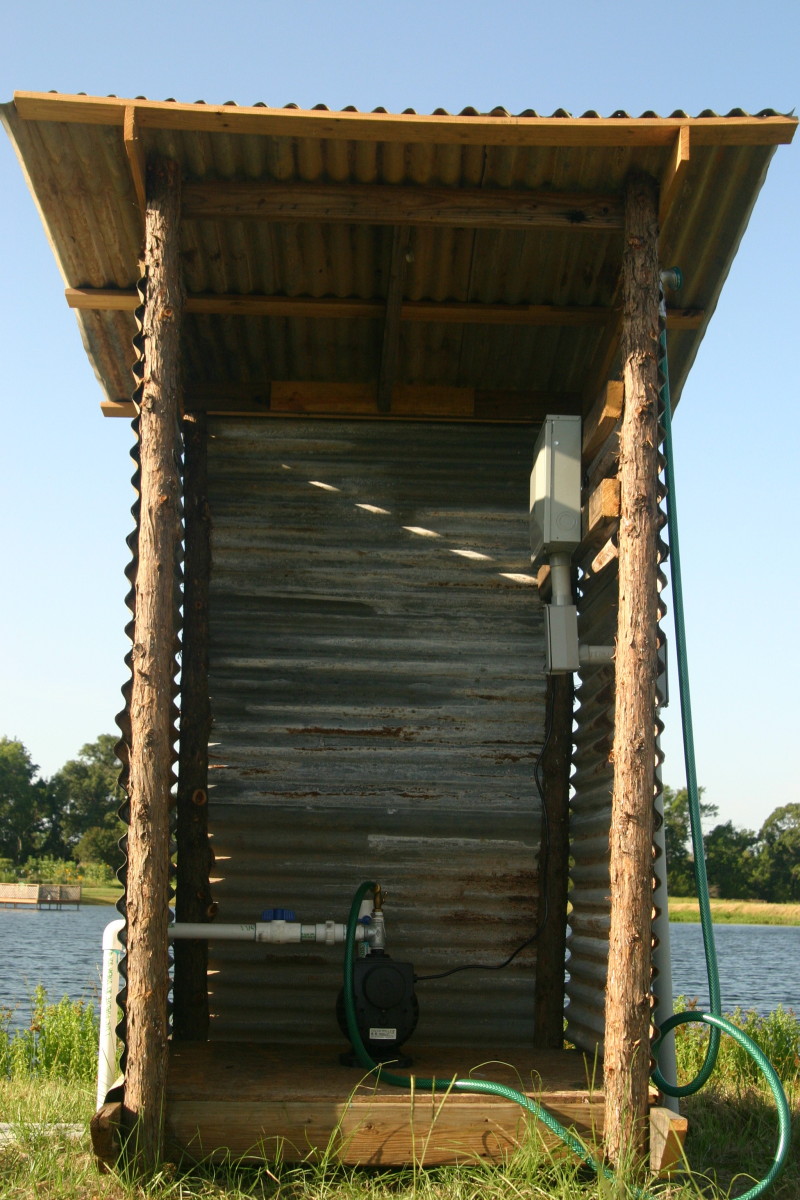
We recently installed our new electric pump in the wellhouse. This pump draws water off of our two acre pond to feed the garden. We test this water annually to make sure our water supply is staying super clean. We also have a ground well that is our back-up water supply. It can resupply the pond if it gets too low during a drought year.
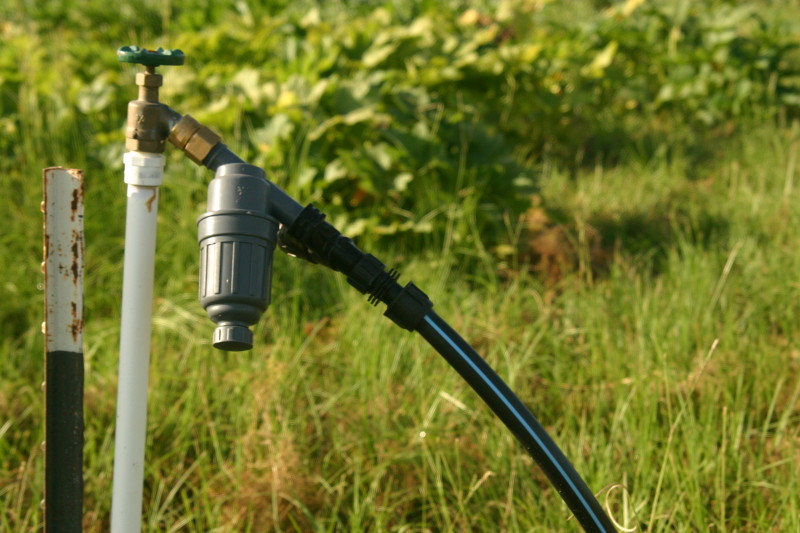 The water is brought up the hill to several upright spigots. At each spigot we have a small filter to remove any remaining debris. From each of the uprights, the water runs to one section of the garden, each containing 50-60 planted garden beds. We can shut the water on or off at each upright spigot so only the sections of the garden that need water will receive it, but we can also turn off or on each individual drip line at each bed so only the beds in need of water will receive it.
The water is brought up the hill to several upright spigots. At each spigot we have a small filter to remove any remaining debris. From each of the uprights, the water runs to one section of the garden, each containing 50-60 planted garden beds. We can shut the water on or off at each upright spigot so only the sections of the garden that need water will receive it, but we can also turn off or on each individual drip line at each bed so only the beds in need of water will receive it.
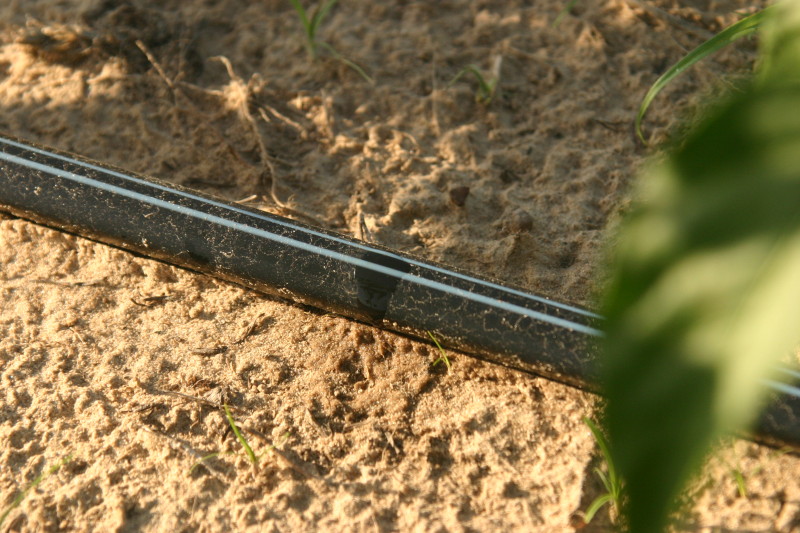 The drip lines have tiny holes spaced 6 inches apart, which release a single drop of water every couple of seconds. Over the course of one hour, each plant receives roughly one quart of water, right where it needs it, close to the roots.
The drip lines have tiny holes spaced 6 inches apart, which release a single drop of water every couple of seconds. Over the course of one hour, each plant receives roughly one quart of water, right where it needs it, close to the roots.
Many of our summer plants that grow for many months are planted right into long strips of micro-thin black plastic. Here the drip lines are laid first, then the plastic is laid over the bed, next a hole is made in the plastic and the plant is planted into the soil. The plastic forms a barrier for weed growth, holds in moisture, and keeps the roots a little cooler. For our eggplant, tomatoes, and peppers that will grow until frost, the thin plastic mulch saves water, labor, and weed pressure.
This fall you can come and check out our irrigation set up when you come to the Member Potluck Picnic! There is much hands on learning to be had in the garden at Red Moon Farm.









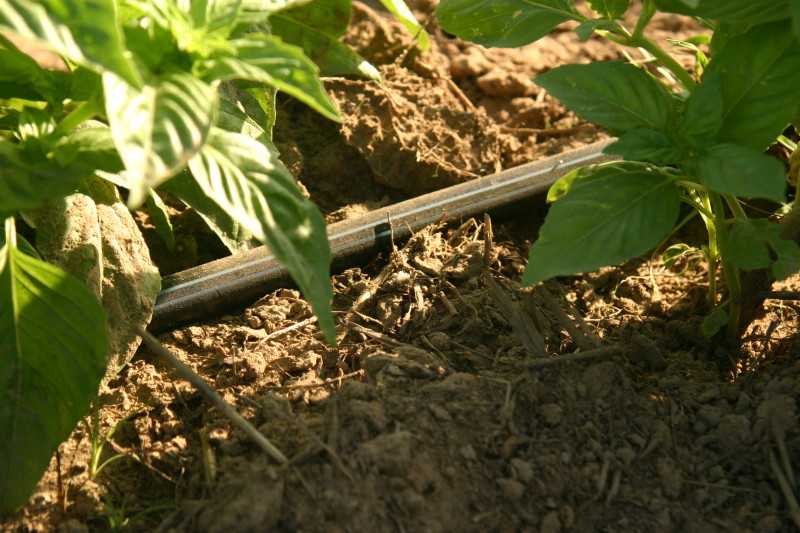
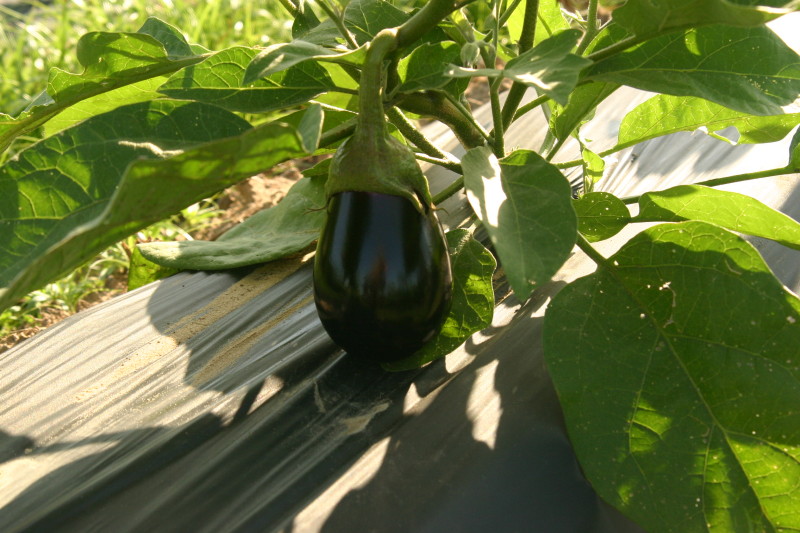
I love how you mentioned how you can use a trench to irrigate. It is important to understand how you should do some research before choosing one. We need to choose a good system for our corn this year, so I wanted to look into it.